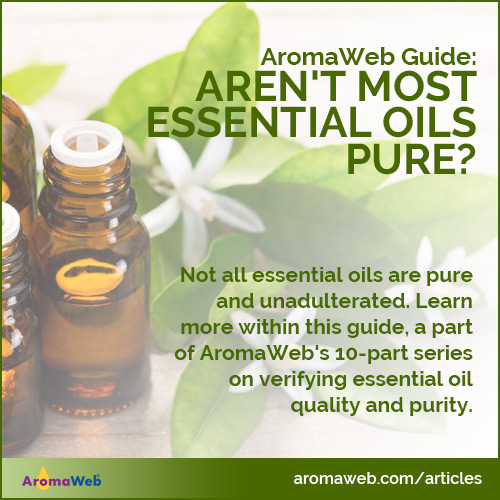Aren't Most Essential Oils Pure?
Pure, unadulterated essential oils that possess the optimum ratio of natural constituents for therapeutic benefit are sought for therapeutic use in aromatherapy.
Essential oils, however, are distilled and used not only in holistic aromatherapy, but as mentioned previously, are also distilled for use in the personal fragrancing, home fragrancing, cosmetic and in the food/beverage/flavoring industries. In these industries where purchasers of essential oils use them for mass production, there is far less need for "pure" essential oils and far greater need for consistent, standardized essential oils that do not change from lot to lot.
For example, Peppermint Essential Oil is used primarily as a flavoring for candies (i.e. Candy Canes), chewing gum and ice creams. It is often referred to on food ingredient labels as Oil of Peppermint or simply as Peppermint Oil. Because large food/candy manufacturers must produce a consistently flavored product, the intensity, aroma and overall flavor of the peppermint oil they use must remain consistent between each lot of oil that they purchase. Peppermint Oil manufacturers, therefore typically standardize the essential oils that they sell by establishing a blueprint of the percentage that each important constituent should reach within each essential oil. They then test the oil and then adjust the oil by adding or removing constituents until the resulting oil meets the ideal percentage.
This standardization process, however, is not ideal for aromatherapy work as the resulting oil is no longer an unadulterated distillation or extraction and may contain added isolates or may have important constituents removed.
Standardized or rectified oils are not always clearly marked as such. Additionally, some essential oils are tampered with, also known as adulterated, in order to give the illusion that the oil is of an higher quality than it is, or to extend more costly oils in order to make more money on the sale of the oil. For example, the pricey Japanese citrus Yuzu Essential Oil resembles a combination of grapefruit and mandarin essential oils. Some sellers may be tempted to blend grapefruit and mandarin essential oils together and market the blend as the more expensive Yuzu Essential Oil. Patchouli Essential Oil is sometimes extended with the addition of less costly balsams or cedarwood. Lavender Essential Oil is sometimes adulterated by the addition of more linalyl acetate.
This topic consists of several separate related articles. Use the links shown below to navigate through the series.
Next: Part 4: Constituents - What do Essential Oils Consist Of?
- Part 1: Introduction
- Part 2: Why Is the Quality/Purity of an Essential Oil Important?
- Part 3: Aren't Most Essential Oils Pure?
- Part 4: Constituents - What do Essential Oils Consist Of?
- Part 5: Quality vs. Purity - Aren't They the Same Thing?
- Part 6: Quantifiable Testing of Essential Oils
- Part 7: GC-MS and GC-FID Test Results: How to Understand and Use Them
- Part 8: Organoleptic Testing of Essential Oils
- Part 9: Other Quantifiable Tests for Testing the Quality and Purity of Essential Oils
- Part 10: Essential Oil Quality and Purity Conclusion: Final Questions/Answers
